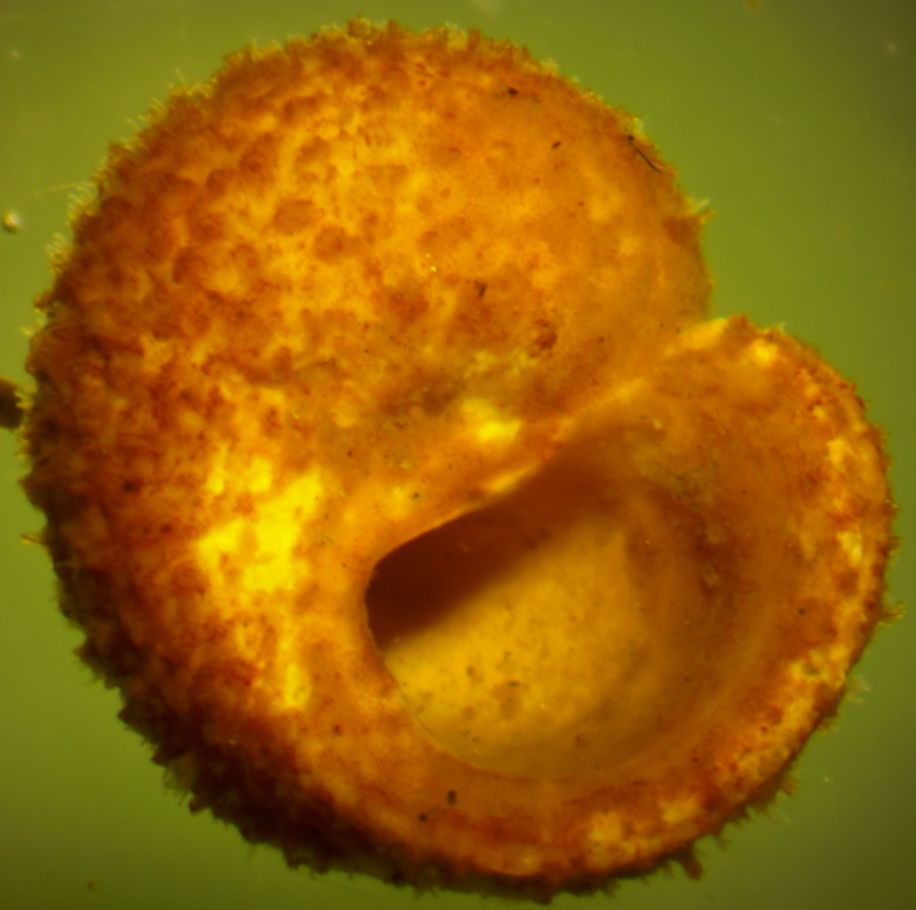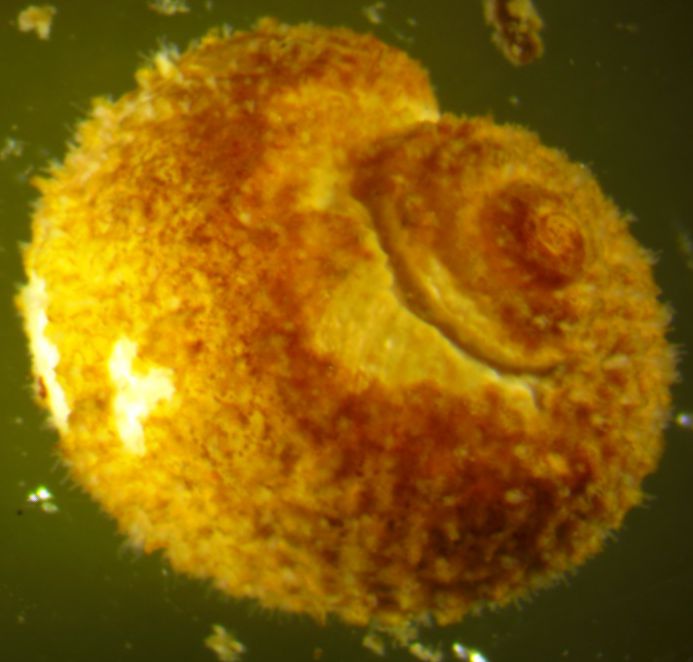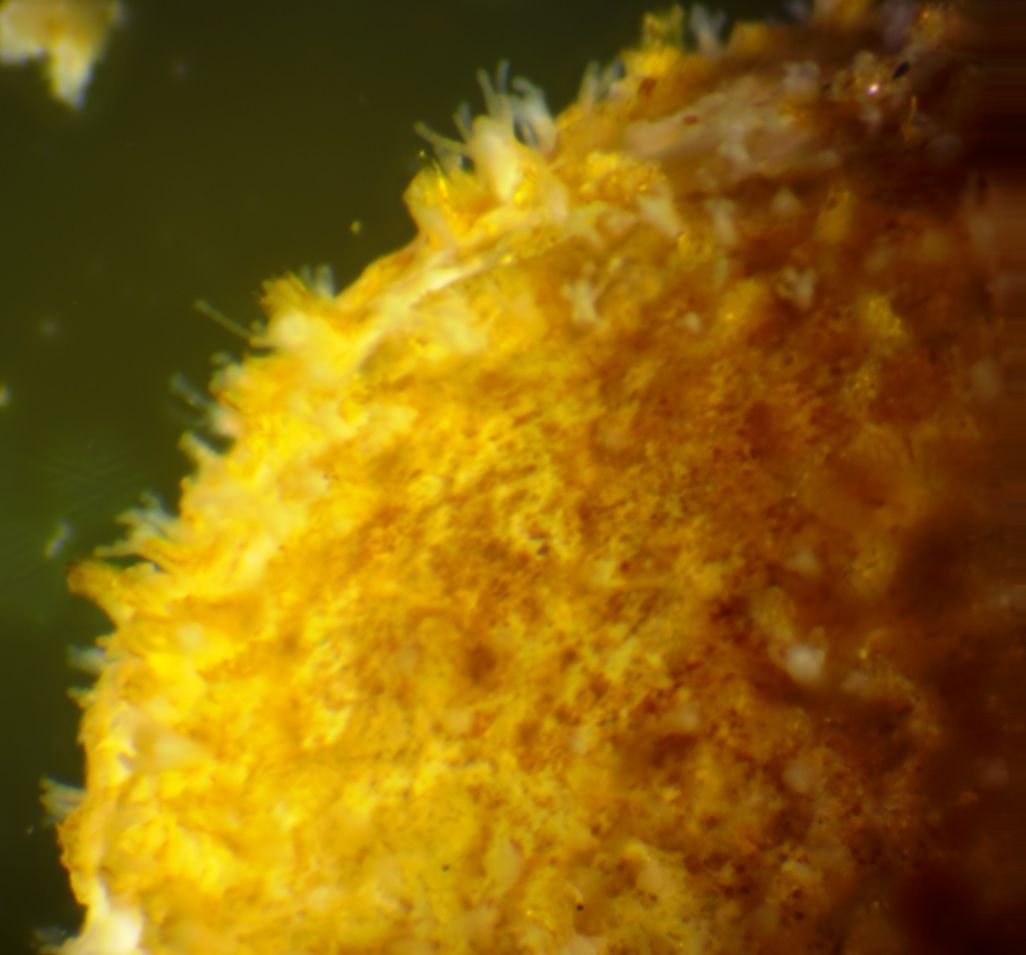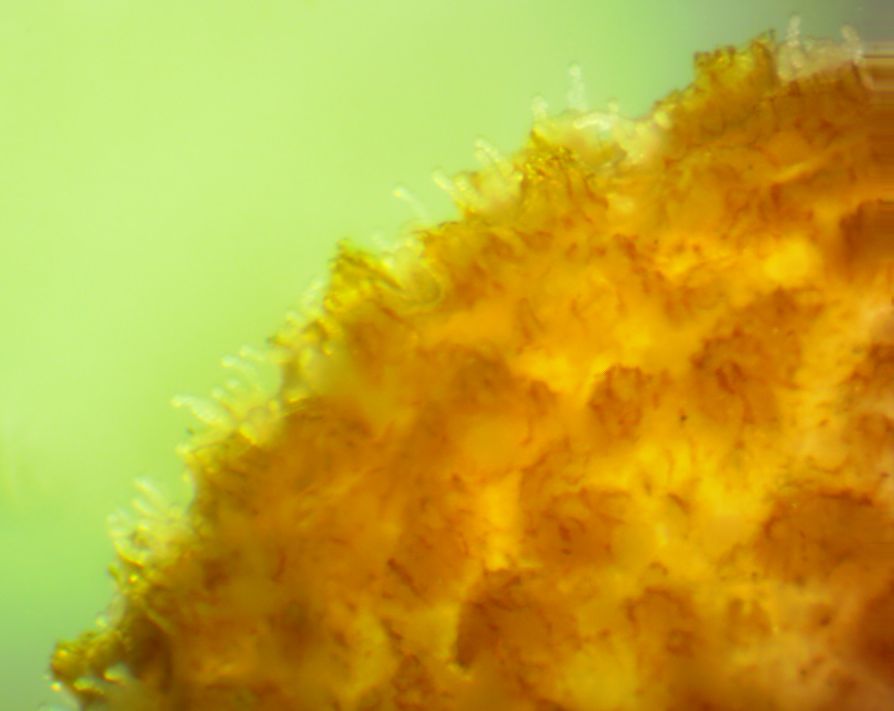Hydractinia sp.Common name(s): Snail fur |
|
| Synonyms: |  |
|
Phylum Cnidaria
Subclass Hydroidolina
Order Anthoathecatae
Suborder Filifera
Family Hydractiniidae
|
|
| Small shell 6 mm wide and 9 mm long almost completely covered with a fur of Hydractinia sp. Collected by otter trawl in Burrows Bay, July 2017. I do not know if a hermit crab was resident in the shell when collected, but at any rate this colony has not grown an extended shelf out from the shell aperture so the hermit crab had likely not yet grown very much. | |
| (Photo by: Dave Cowles, July 2017) | |
Description: Hydroid genus Hydractinia is called 'snail fur' because the hydroids form a colonial mat on the surface of snails, especially living symbiotically with hermit crabs who have taken up residence in the dead snail shells. Colonies include feeding polyps (gastrozooids), reproductive polyps (gonozooids), and spinelike protective polyps (dactylozooids). Neither the entire hydranths (polyps) nor their basal portions are covered with a hydrotheca, though the polyps grow up out of a mat-like maze of perisarc-covered stolons. The polyps arise individually, without branching, from the stolons. The gastrozoooid polyps are colored white and most have just 8 filiform tentacles in 1 whorl, while the perisarc-covered mat is usually golden yellow. Spinelike dactylozooids, also colored yellow, also arise from the mat. The female gonozooids have only 1 egg in each gonophore, but may contain more than one gonophore. Gastrozooids can extend up to a maximum of about 2.5 mm.
How to Distinguish from Similar Species:Hydractinia laevispina has 8 tentacles but the polyps are pink. The polyps in Hydractinia milleri are pink and have 12-20 tentacles.
Geographical Range:
Depth Range:
Habitat:
Biology/Natural History:Hydractinia
is a genus of hydrozoan polyps
that does not have a medusa
stage. The polyps release
planula larvae which settle and grow into polyps.
It characteristically occurs on snail shells in which hermit crabs are
living. As the hermit crab grows, the hydroid
colony forms a mat which extends farther and farther out from the aperture
of the shell, effectively enlarging the shell and making it unnecessary
for the hermit crab to discard the shell and find a new one. This no doubt
benefits both the hydroid
and the crab.
| Return to: | |||
| Main Page | Alphabetic Index | Systematic Index | Glossary |
References:
Dichotomous Keys:Kozloff, 1987, 1996
General References:
Scientific Articles:
Web sites:
Encyclopedia
Brittanica https://www.britannica.com/animal/Hydractinia (Characteristics
of the genus)
General Notes and Observations: Locations, abundances, unusual behaviors:

This view of the other side of the shell shows that the entire shell
is covered, except for a few spots where the hydroid
may have been scraped off.

This closer view with depth-of field enhanced by stacking and combining
a series of photos shows the individual, white gastrozooids
with the yellow, spine-like dactylozooids
interspersed among them.

Here is an even closer view, also based on a series of stacked photos.
The gastrozooids,
here apparently not fully extended, are each only a fraction of a millimeter
high.
Authors and Editors of Page:
Dave Cowles (2017): Created original page
CSS coding for page developed by Jonathan Cowles
Salish Sea Invertebrates web site provided courtesy of Walla
Walla University